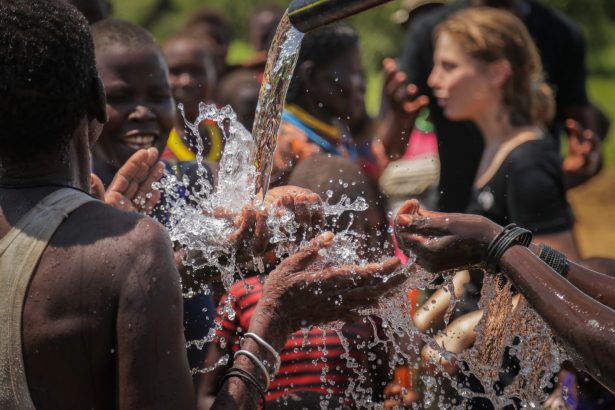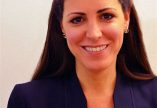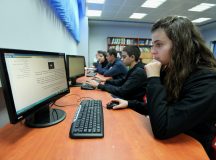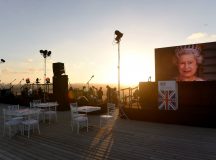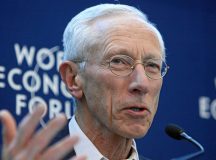Israeli Prime Minister Benjamin Netanyahu has visited African three times in the last 18 months, with the continent increasingly being perceived as a strategic asset. BICOM CEO James Sorene spoke to Sivan Ya’ari the founder of Innovation: Africa, a New York based non-profit that brings Israeli solar, agricultural and water technologies to rural African villages. Ya’ari discusses the strategy behind her organisation and argues that over 40 years after many African countries severed relations with Israel in the aftermath of the Yom Kippur War, governments are increasingly looking for Israeli technological know-how to help alleviate their challenges. She also suggests that this model could be extended to Israel’s neighbours in the Middle East.
James Sorene: How did you end up working in Africa installing water pumps?
Sivan Ya’ari: I was 20 years old, working for Jordache in Madagascar when I discovered that energy was the key. I realised if you can provide energy for schools, children can study at night. If you provide energy for medical centres it improves access to medicines. Most importantly, if you provide energy to pump water, you can break the cycle of poverty. Even today, 350 million people are searching for water every day, but there is plenty of water just below their feet. There is just no energy to extract it. And, 620 million people in Africa, more than 60 per cent of the continent’s population, do not have access to energy. Because of that, finding clean water is a huge challenge. When you have to spend the time searching for it, you cannot go to school or work. And even when you find water it is often not clean enough. You go to the medical centre and there are not enough vaccines or medicines because there is no energy to refrigerate them. It’s a vicious cycle but the solution is simple.
I went to Columbia University to study for a Master’s in International Energy Management and Policy. In one conversation with my professor we concluded that just two solar panels could power a medical centre and provide enough energy for a few light bulbs and refrigeration. I launched a fundraising drive among the students to pay for it and it was so simple and cheap we decided to do it again. What started as two solar panels in one medical centre in one village has expanded to water purification, solar energy and drip irrigation in over 200 villages in eight countries.
We have helped more than a million people, but that number is just a drop in the ocean. We want to scale up so that by 2025 we can help six million people in a thousand villages.
JS: That’s a big expansion, how are you going to deliver that?
SY: Our engineers in Israel are developing more efficient technologies so we can make that jump. The UN has recognised the innovation in our existing systems. In particular our ‘remote monitoring system’ that allows us to monitor online every system we have installed in every village, in real time. We can check the volume of water being pumped and how much energy is being generated and consumed. If there are any problems the system alerts us immediately. We have local offices with local engineers, trained by our Israeli technicians, who are on standby to deal with any problems.
JS: How many people work for Innovation: Africa and what is your total budget?
SY: We have 23 full-time staff but we have a network of trained engineers in Africa working part-time. Last year we raised $3.5m but in order to reach six million people in 1,000 villages, we need to raise $32m, which is $4.5m a year, every year until 2025. If we can do it, we will provide water and electricity to all those people.
It costs $18,000 to provide enough power for a school, to install solar panels in the classrooms and in teachers’ homes. We do this to attract good teachers and keep them in the villages. It’s the same for a medical centre, $18,000 for solar panels for lighting and refrigeration and solar panels for the homes of the doctors and nurses. But these are one time set up costs.
When we use solar energy to pump water, we pump about 30,000 – 50,000 litres a day. We install 30 pipes throughout the village, meaning when we pump water we install pipes every 4km, and in one system we can reach thousands of people. The entire system is a one-time cost of $50,000.
JS: On your video it all looks very simple; there is an underground aquifer and you just dig down and lay the pipes. Is that always the case? What if there is no underground aquifer?
SY: There is always a way to extract water. Sometimes we have to drill for 40 meters, sometimes 150 meters. There is a problem with severe droughts. We are currently working with UNICEF helping refugees in Cameroon who have fled Boko Haram in Nigeria and the civil war in Central African Republic. The refugees’ entry into Cameroon increased competition for water resources and that has exacerbated the conflict. My team are helping UNICEF to provide solar energy for medical centres and pumping water.
 (Innovation: Africa. Courtesy of author).
(Innovation: Africa. Courtesy of author).
There was a major problem with famine in Uganda. When I arrived in 2017, I was told 37 people had just died from lack of water. I quickly understood that even if we started drilling straight away to extract water it would have taken three months before we could grow food.
We are now looking to invest into the remote villages in South Africa. The demand is there, the solutions are simple, and cutting edge technology exists. We bring the best technology from Israel – lithium batteries, LED light bulbs, solar panels, drip irrigation, remote managing systems, and we continue.
JS: If it’s so simple, why can’t the governments do it themselves? Is it a lack of money, political will, infrastructure?
YS: All to all the above. The challenge is so big. Before entering a country I first meet the minister of energy to understand the county’s plans for electricity grid extension. I prioritise regions where I know access to energy will be very low for at least the next 10 to 20 years. There are usually no roads in the areas in which we operate. Therefore, the governments are focussed on building infrastructure that they don’t have. We are talking about millions and millions of people who are very difficult to reach, so we try to operate with the governments in places where they are not present. At the policy-making level there is a great deal of interest in what Israel can offer and they are very appreciative of what Israel has provided. On the strategic political level this is becoming clearer. Prime Minister Benjamin Netanyahu has visited Africa three times in the last 18 months.
JS: There was a point early on in Israel’s history where Africa was very important and there were partnerships in agriculture etc. but that seemed to disappear. Is that partnership back?
YS: In 1973 a large number of African countries severed relations with Israel, largely due to diplomatic pressure from Arab states. Now they realise that Israel has become a hi-tech centre, an innovator and a water exporter. They are looking for Israeli know-how.
Our generation today has a choice that previous ones have never had: if we want to solve the problems of the next generation we are now able to, because the technology exists. It is just a matter of choosing, and it’s much cheaper than many people think.
JS: Is this a story of constant progress or do you think you made mistakes?
YS: For nine years we spent way too long in the villages and not enough time sharing technology. Only now are we talking to other people about what we’re doing to try and spread the technology because we were not reaching people fast enough.
In Israel we have some other technologies that make the solar panel and water pumping system more efficient and productive, like better batteries, better irrigation systems. But the original concept is a simple one and the same wherever you go. Installing the solar panels is the easy part. Before that you spend about six weeks working with the village chief, the elders, the women associations, who have to elect a committee and then help them open bank accounts, set up new businesses, and to help them replicate our sustainable business models (for example for every new solar system we set up, we also develop a micro business where people can pay to charge their phones, and the money generated is used to replace the light bulbs). Today, the business models include other ideas – agribusiness, better livestock, better building materials – and people are healthier and more financially independent. All this can stem from giving water to a community.
But the goal is always for our engineers to train the local engineers so that our technology can be replicated on a much larger scale.
JS: How do you find local engineers?
YS: We always look for local contractors to help the project and then decide what specifically that training should focus on to deliver the project. It might be construction of the solar pumping system, installation and management of the monitoring system, the installation of the drip irrigation – it depends on the needs of the specific country and what kind of education levels we find in the remote areas where we operate.
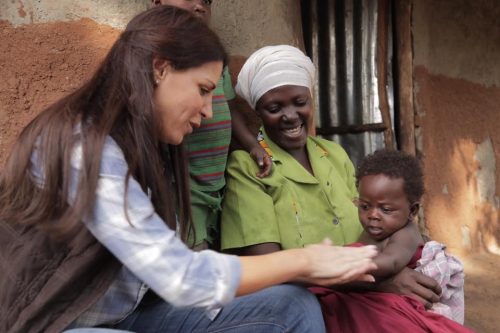 (Local Innovation: Africa. Courtesy of author)
(Local Innovation: Africa. Courtesy of author)
We recently started work in a new region in Tanzania called the Dodoma. My manager is looking for the right people to train so that my engineers can go and start the project. Sometimes you have to build the capacity yourself, it takes time and it can be expensive, but there is no other way of being successful.
JS: Do you think your model can be used for Israel’s neighbours?
SY: Absolutely. There is no reason why it can’t be adopted for any other country, and it should. I have been so busy focusing on Africa that I haven’t looked into the possibilities with Israel’s neighbours and in the wider Middle East, but if we can find partners then I believe it can happen.

